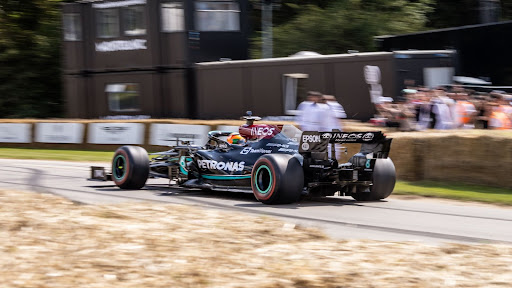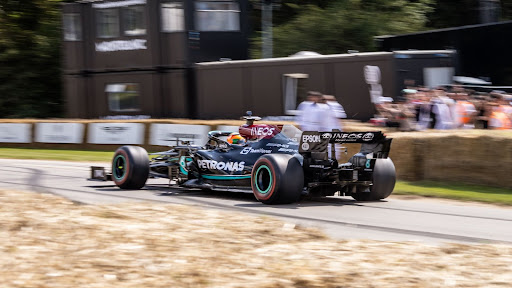

Across industries large and small, more and more great brands are investing in sports sponsorships. In tandem, the types of sponsorships and available opportunities are changing at a rapid pace as well. From new, on-field LED placements to virtual signage in broadcasts, there is no shortage of variety for brands and teams to collaborate on. That means tracking value and return on investment has never been more challenging, nor more important.
So how do sponsors measure impact and maximize return on investment? Traditional methodologies are antiquated. With the rise of social media sharing and OTT delivery, a complete data set is not just important, it’s essential. Of additional importance is understanding the new and evolving sports sponsorship landscape. This post will explore not just the change in sponsorship opportunities but also the change in placement quality.
New Opportunities, New Challenges in Sports Sponsorship
The increase in the popularity of sports sponsorships has created a virtuous cycle for both brands and teams. As more organizations invest in connecting with fans, teams and leagues are racing to find even more sponsorship placements to sell. For both parties to be successful they must be able to track placements, exposure, and engagement like never before. Tools like Relo Metrics help brands and rights holders alike find success in this ever-evolving paradigm.
For example, look no further than Major League Baseball's recent announcement of on-field LED signage starting in the 2022 season. This field-level signage improves the quality of the image or advertisement. It also can be rotated by pitch, inning, or at any other time. This gives teams the ability to sell more sponsorship placements. On the surface this seems like a great development: teams can maximize revenue generated through sports sponsorships while sponsors have more opportunities to sponsor teams. Revenue streams for all parties are unlocked by adding new placements at stadiums.
Yet, not all sponsorship opportunities are created equal. The increase in digital signage where rotations and impressions vary widely means that at a moment's notice, the value of an impression may change. In the example of a placement behind home plate, the value of an impression can change from pitch to pitch. A Tuesday day game during the summer will have fewer broadcast viewers than a playoff game. That difference is straightforward and easy to understand. What about the change in value depending on who is pitching or who is batting? Surely a star reliever holds a viewer's interest just as a popular hitter attracts more viewers. What about the game situation itself? A situation of “bases loaded in the bottom of the ninth” is not only more likely to draw more broadcast attention than a mid-inning, low-stakes at-bat. Such a situation is also significantly more likely to result in a situation that goes viral on social media, further increasing exposure and impressions.
This is why tracking campaigns during the season is imperative. Brands and teams alike need to work together to ensure key KPIs are met, especially as placements and rotations change.
Do teams build in the value of how they price these placements? Do brands look for arbitrage opportunities where a particular sponsorship might result in an unpredictable spike in return on investment? It should not be a surprise that the answers to these questions are complicated.
The need for better data and clear insights gleaned from that data will drive the next generation of sports sponsorships. Clearly, the opportunity to make a meaningful impact with a sports sponsorship has never been greater. So too has the potential for wasted investment grown for teams and brands alike.
Understanding the Impact in a Changing Landscape
The key is for all parties to understand how to value the true impact of a sponsorship before, during, AND after an engagement.
There are a number of factors to consider, starting with the most obvious. First is the placement itself - how many people will see the ad, and for how long? Other factors come into play as well. For example, what is the brand's target audience? If the brand is trying to reach a younger demographic, then a placement during a game that's popular with that demographic will be more valuable than a placement during a game that's popular with an older demographic. Additionally, it's important to consider the overall tone of the event. Is it a light-hearted, fun event, or is it a serious, competitive event? A brand that's sponsoring a serious, competitive event will want to make sure that its ad is appropriate for the tone of the event.
With the evolution of sports sponsorships, there are some deeper, more detailed factors to consider. Considering the duration of a placement is important. So too is evaluating when the placement occurs and what is happening in the event itself. Of additional interest should be what other placements are nearby or within the view of the viewer or fan. Consider Red Bull Racing's sponsorship with Oracle. Is an impression of Oracle's logo more or less valuable if the CrowdStrike logo on the Mercedes Formula 1 car is also in the frame?

Placement density can greatly affect the value of sponsorship and resulting impressions. It's one thing to have a placement on a scoreboard or web page. It's another entirely if that same scoreboard or web page features two or three or even a dozen other sponsors. Access to an audience is not enough. Your sponsorship also needs the audience's attention to truly deliver value.
Sports Sponsorship Evaluation in an Age of Change
The complexity of evaluating sports sponsorships will only increase over time. As more brands show interest in sponsorships, teams, leagues, and venues will find more ways to offer more placements. Evaluating these placements in near-real-time is paramount to success for all parties.
It is critical to use a tool like Relo Metrics to track sports sponsorship value. Relo Metrics ingests data around placement, duration, and resulting exposure without bias or agenda. What's more, Relo provides reporting and analysis throughout the season, giving brands and teams alike the chance to course-correct during a sponsorship. With Relo Metrics, receiving data only at the end of a season is a thing of the past.
Active, Not Passive
Long gone are the days when a passive sponsorship measurement strategy leads to hitting brand goals and objectives. The move toward digital and virtual sponsorship placements is not a trend. These sponsorships are only going to continue to grow in popularity as more and more brands enter into sponsorship agreements.
To succeed with sports sponsorships, brands need timely and complete sources of data. Relying on teams to provide data (or, conversely, teams relying on brands) is unreliable and unsustainable. An agreeable source of truth is of paramount importance for a partnership to succeed over time. Furthermore, data must be available throughout an engagement instead of only at an arbitrary endpoint in time.
In the end, both brands and teams want the same thing: value from the sponsorship. To deliver on this promise it is imperative that both adjust to the changing sports sponsorship paradigm. To better understand how Relo Metrics can give a holistic view of sponsorship impact, contact our team here. Viewing your goals and desired outcomes through the lens of unbiased data sets will unlock the full potential of your sports sponsorships.